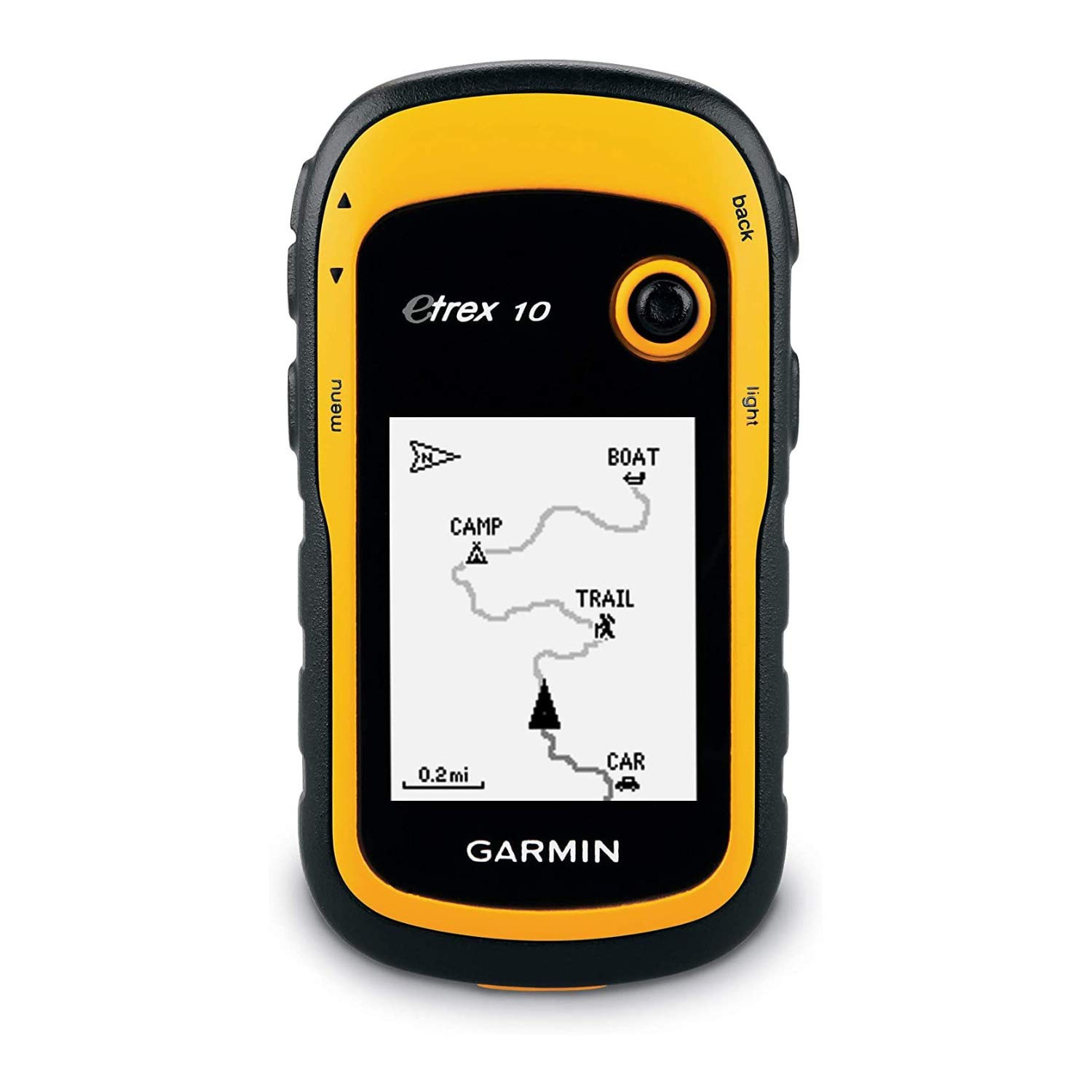When we think about hiking, one of the first things that come to mind is the thrill of exploring the great outdoors.
Whether we’re trekking through lush forests or navigating rocky trails, having a reliable map and GPS app is essential to ensure we stay on course.
Offline maps and GPS apps provide us with access to crucial navigation information without needing a cell signal, making them invaluable for our adventures into remote areas.
The right offline maps and GPS apps can enhance our hiking experience by offering detailed topographic information, trail recommendations, and points of interest.
As we venture into nature, these tools can ensure we explore safely and make the most of our time outdoors.
A good app can turn a stressful situation into a smooth navigation experience, allowing us to focus on the scenery rather than worrying about getting lost.
Best Offline Maps and GPS Apps for Hiking
When we’re out in nature, having reliable maps and GPS apps is essential for a great hiking experience.
We’ve compiled a list of the best offline options that will keep us on track, even in the most remote areas.
Check them out to find the perfect companion for our next adventure!
Garmin eTrex 22x
We recommend the Garmin eTrex 22x for its solid performance in outdoor navigation, making it a reliable companion for hiking adventures.
- Robust design suitable for rugged outdoor use.
- Sunlight-readable color display enhances visibility outdoors.
- Preloaded maps simplify trip planning.
- Battery life could be inadequate for long excursions.
- Some users find the interface a bit cumbersome.
- Limited internal memory for extensive map collections.
The Garmin eTrex 22x serves as a reliable tool for outdoor enthusiasts.
Its rugged build and intuitive 2.2″ color display allow us to navigate various terrains without trouble.
With preloaded Topo Active maps, exploring new trails becomes effortless.
We appreciate the dual-satellite support, ensuring that we maintain accurate tracking even in challenging environments.
This feature is particularly vital when venturing into dense forests or mountainous areas.
While the internal memory is decent, the unit can benefit from additional map storage using the micro SD card slot.
A potential shortcoming is the battery life, which might not cover longer hiking trips without a recharge.
Nonetheless, for regular day hikes, it performs admirably.
Garmin eTrex 10 Handheld GPS
The Garmin eTrex 10 is a solid choice for budget-conscious adventurers seeking reliable navigation.
- Durable and waterproof design perfect for outdoor conditions.
- High-sensitivity GPS receiver ensures quick and accurate positioning.
- Paperless geocaching support enhances our exploring experience.
- Monochrome display may be less appealing compared to color screens.
- Limited internal storage can affect map options.
- Requires AA batteries, which may not be convenient for all users.
This device stands out with its rugged build, making it ideal for varied weather.
We appreciate the clear 2.2-inch display that helps us track our location efficiently.
Being waterproof to IPX7 standards adds extra peace of mind during unexpected rain.
The eTrex 10 supports GLONASS, boosting satellite acquisition speed, crucial when we’re deep in the wilderness.
It also accommodates paperless geocaching, allowing us to enjoy exciting treasure hunts without the need for printed coordinates.
While some may find the monochrome screen less desirable, it remains functional and gets the job done.
We also note the necessity for AA batteries which can add to our packing list, but the extended battery life makes it manageable for longer trips.
In short, the Garmin eTrex 10 is a dependable and affordable GPS unit that fulfills our hiking navigation needs effectively.
Garmin eTrex 32x
For outdoor enthusiasts seeking a reliable handheld GPS, the Garmin eTrex 32x offers a sturdy option with useful features.
- Reliable and rugged design suited for outdoor use.
- Preloaded Topo Active maps enhance navigation on trails.
- Long battery life makes it ideal for extended trips.
- Some users find the interface challenging to navigate.
- Limited display size can be hard to read in certain conditions.
- Compatibility issues with SD cards may arise.
The Garmin eTrex 32x is a practical tool for anyone venturing into the wilderness.
With its sunlight-readable 2.2-inch color display, we can easily see maps, even on sunny days.
The device is preloaded with Topo Active maps for hiking and cycling, which means we can hit the trails immediately without additional setup.
Battery life is another strong point, lasting up to 25 hours in GPS mode with just two AA batteries.
Whether we’re on a day hike or an extended adventure, we can rely on it to keep us informed of our location.
Plus, the option to expand storage via micro SD offers flexibility for those who want additional map options.
Navigational features, like the 3-axis compass and barometric altimeter, help us maintain direction and track elevation changes.
This is particularly useful in mountainous regions.
While some users might struggle with the interface complexity, it generally serves its purpose effectively for navigation.
Garmin GPSMAP 65
This rugged and reliable handheld GPS device is designed for serious hikers seeking top-notch navigation.
- Excellent accuracy in challenging locations due to multi-band technology.
- Large 2.6″ color display ensures easy visibility even in sunlight.
- Bluetooth and ANT+ connectivity for convenient access to Garmin Explore features.
- Initialization and software setup can be complex.
- Requires a compatible smartphone for full functionality.
- Battery life could be insufficient for extended trips without recharging options.
Navigating through dense forests or steep terrains can be a challenge, but the Garmin GPSMAP 65 makes it easier.
With its advanced multi-band technology and GNSS support, we can trust its accuracy even in the toughest environments like urban canyons or heavily wooded areas.
The handheld design and the large, clear display allow for straightforward use on the go.
Setting up the device comes with some hurdles, especially for first-time users.
The software is somewhat cumbersome, requiring the use of additional applications like Base Camp for optimal performance.
While this might deter some users, the benefits largely outweigh these initial frustrations.
Accessing our mapping data becomes a breeze with Bluetooth connectivity, allowing us to link up with the Garmin Explore app.
This feature helps in managing our tracks and reviewing statistics after our adventures.
It’s important to remember, though, that a compatible smartphone is necessary to unlock all functions of the device.
ZOLEO Satellite Communicator
The ZOLEO Satellite Communicator is a solid choice for staying connected during our outdoor adventures, especially in remote areas.
- Affordable monthly plans that can be paused during offseason.
- Reliable satellite messaging ensures communication even in isolated locations.
- Includes features like emergency SOS alerts and dedicated SMS, enhancing safety.
- Service plans may feel pricey depending on messaging needs.
- Requires a subscription for full functionality which can add to the cost.
- Not all features may be necessary for casual users.
For anyone who loves venturing into the wild, the ZOLEO provides essential communication tools.
We can send text messages and emails even when cellular networks fail, utilizing the Iridium satellite network.
The robust design is IP68-rated, making it rugged enough for those challenging hikes.
With over 200 hours of battery life, it promises reliability throughout our trips.
As we hike through the mountains, having the ability to send check-ins or request non-emergency assistance brings peace of mind.
Though it requires a service plan, the benefits, such as unlimited check-ins and emergency alerts, are significant for safety.
The dedicated SMS number makes it easier for friends and family to reach out when we are off the grid.
Buying Guide
When selecting an offline maps and GPS app for hiking, we should consider several key features.
1.
Map Coverage
Look for apps with comprehensive and detailed maps.
They should ideally cover national parks, remote trails, and less-populated areas where we plan to hike.
2.
Offline Functionality
Ensure the app allows us to download maps for offline use.
This feature is crucial when we find ourselves without cellular service.
3.
User Interface
An intuitive interface makes navigation easier.
We want an app that is user-friendly, allowing us to find what we need quickly.
4.
Trail Information
Apps that include trail details—like difficulty levels, elevation profiles, and user reviews—can enhance our hiking experience.
5.
GPS Accuracy
High GPS accuracy is essential for staying on course.
We should look for apps that utilize advanced GPS technology to pinpoint our location reliably.
6.
Customizability
The ability to customize maps and set waypoints is valuable.
This allows us to plan our routes based on our preferences.
7.
Battery Usage
Consider how the app impacts battery life.
Some apps may drain the battery quickly, so we should look for options that optimize power use.
8.
Cost
Finally, evaluate the cost versus features.
Some apps may require a one-time purchase, while others might have subscription fees.
Finding the right balance is important for us.
Frequently Asked Questions
We often encounter questions about the best practices for using offline maps and GPS apps for hiking.
Here’s a closer look at features, device compatibility, and popular app recommendations.
What features should I look for in an offline GPS app for hiking?
We should prioritize features like detailed topographic maps, route planning, waypoints, and real-time GPS tracking.
Offline access to trails, elevation data, and the ability to record our hikes can enhance our overall experience.
Can I use offline maps for hiking on both my iPhone and Android device?
Yes, many apps support both iPhone and Android devices.
It’s crucial to check the app specifications to ensure compatibility with our preferred system before downloading.
How do I access free map downloads for my hiking adventures?
We can find free map downloads through various apps and websites offering OpenStreetMap data.
Some apps feature in-app options for selecting and downloading specific regions, allowing us to access maps without using cellular data.
Are there any reliable GPS apps for hiking that don’t require an internet connection?
Several apps provide reliable offline functionality.
Options like Gaia GPS, Maps.me, and Locus Map allow us to download maps and navigate without an active internet connection, which is ideal for remote hiking areas.
Which hiking app is preferred by users on forums like Reddit?
Users frequently recommend AllTrails for its extensive database of trails and user reviews.
Another popular option is Gaia GPS, known for its detailed topographic maps and user-friendly interface.
What’s a good alternative to AllTrails for offline trail navigation?
A solid alternative is Hiking Project.
It offers detailed hiking information and offline capabilities.
Another option is ViewRanger, praised for its excellent map features and community-sourced trail information.
For those seeking one of the best multifunction navigation tools, Gaia GPS is a strong contender, providing topographic maps and route planning features.
Additionally, AllTrails remains a favorite among outdoor enthusiasts, offering user reviews and trail difficulty ratings.
These apps ensure hikers have the necessary resources to explore safely and efficiently.






